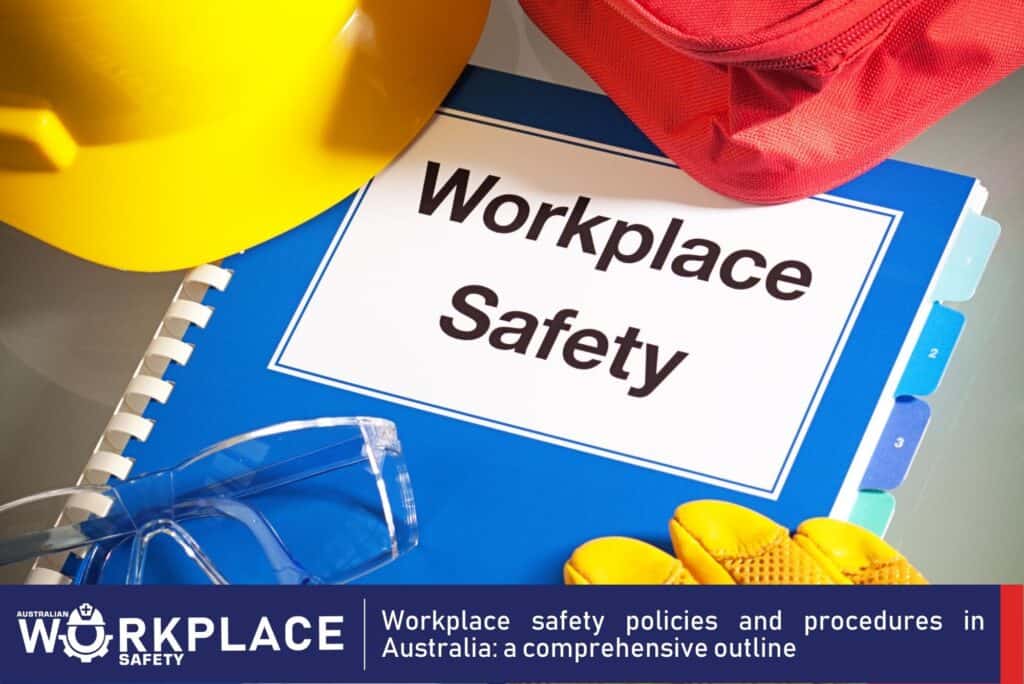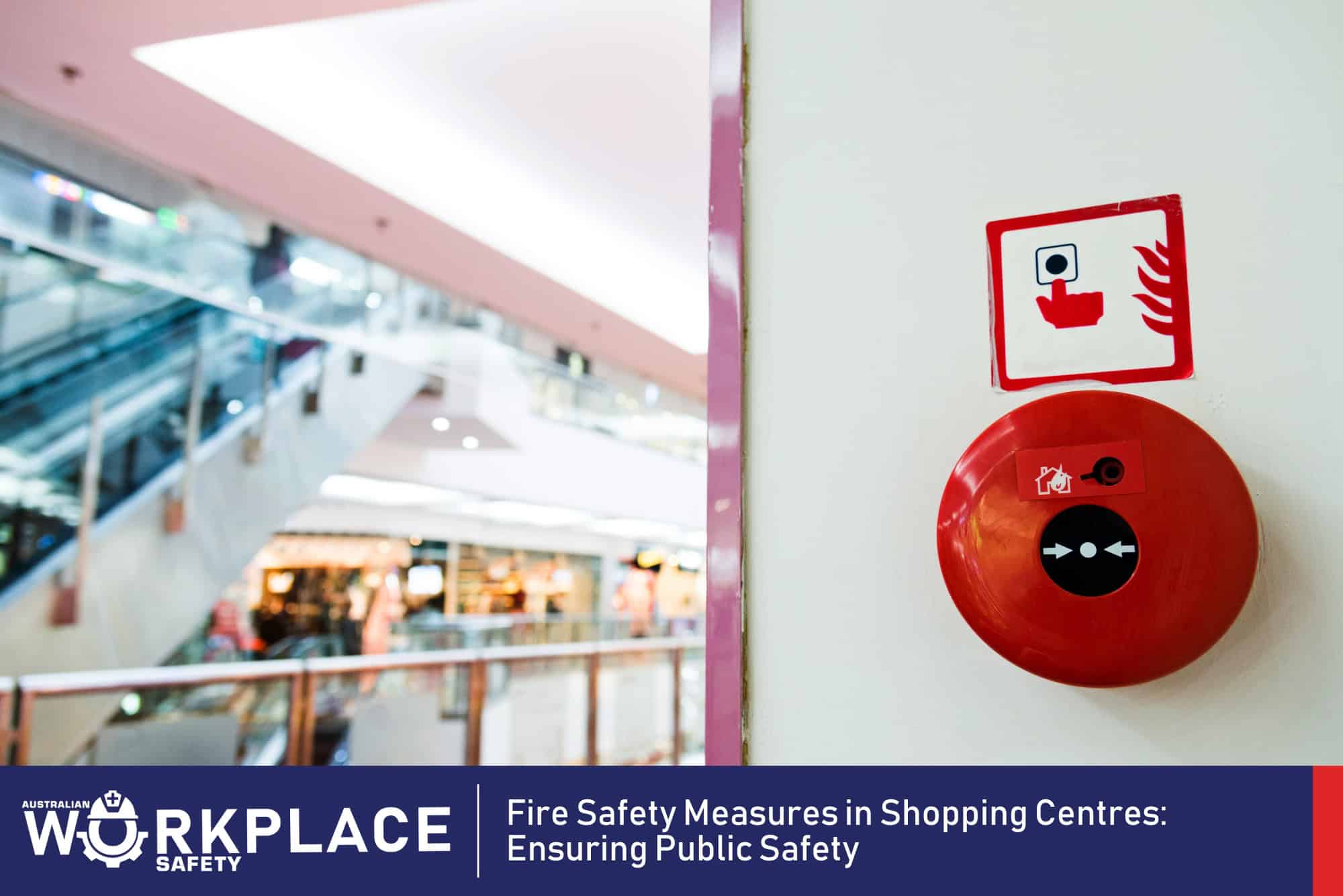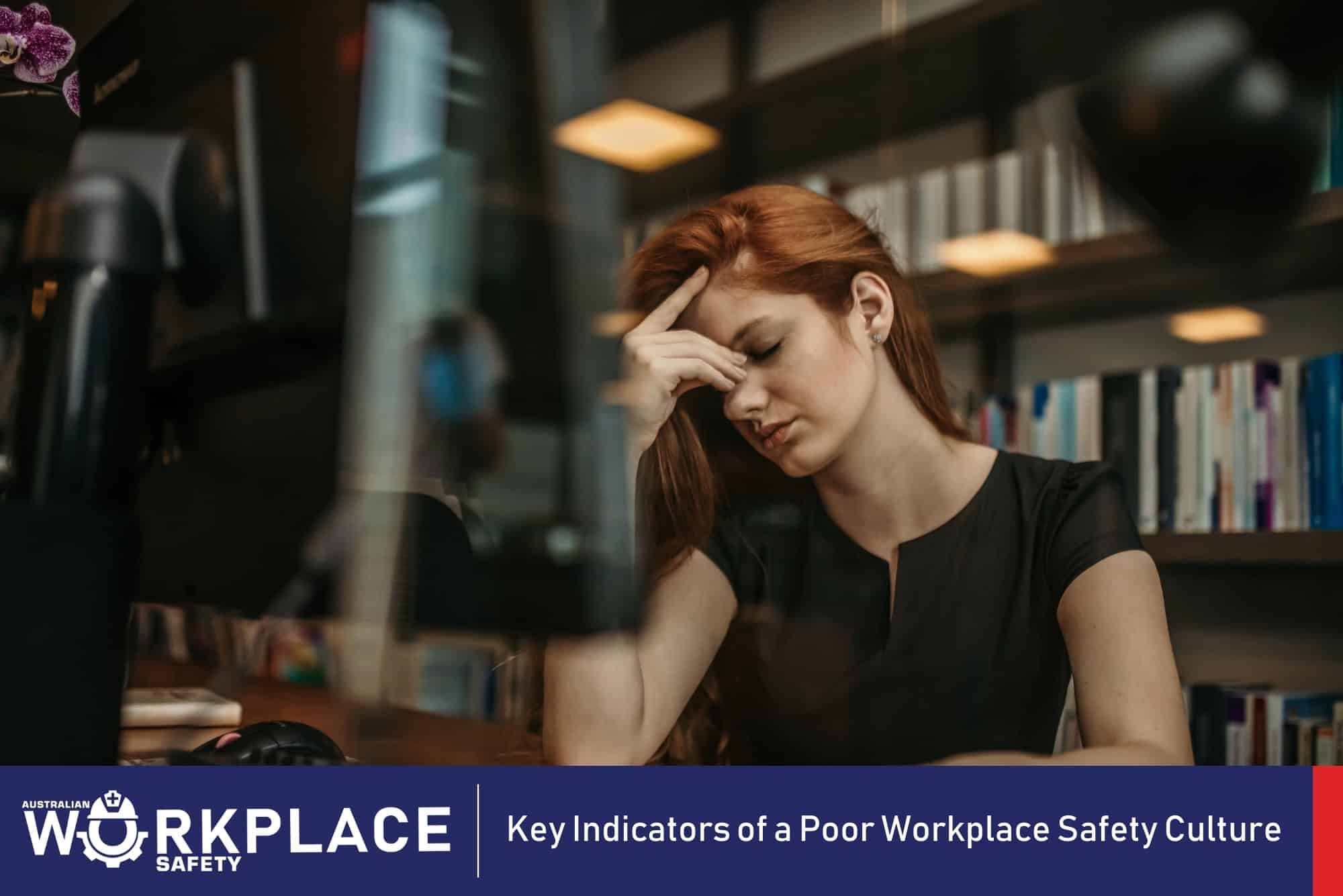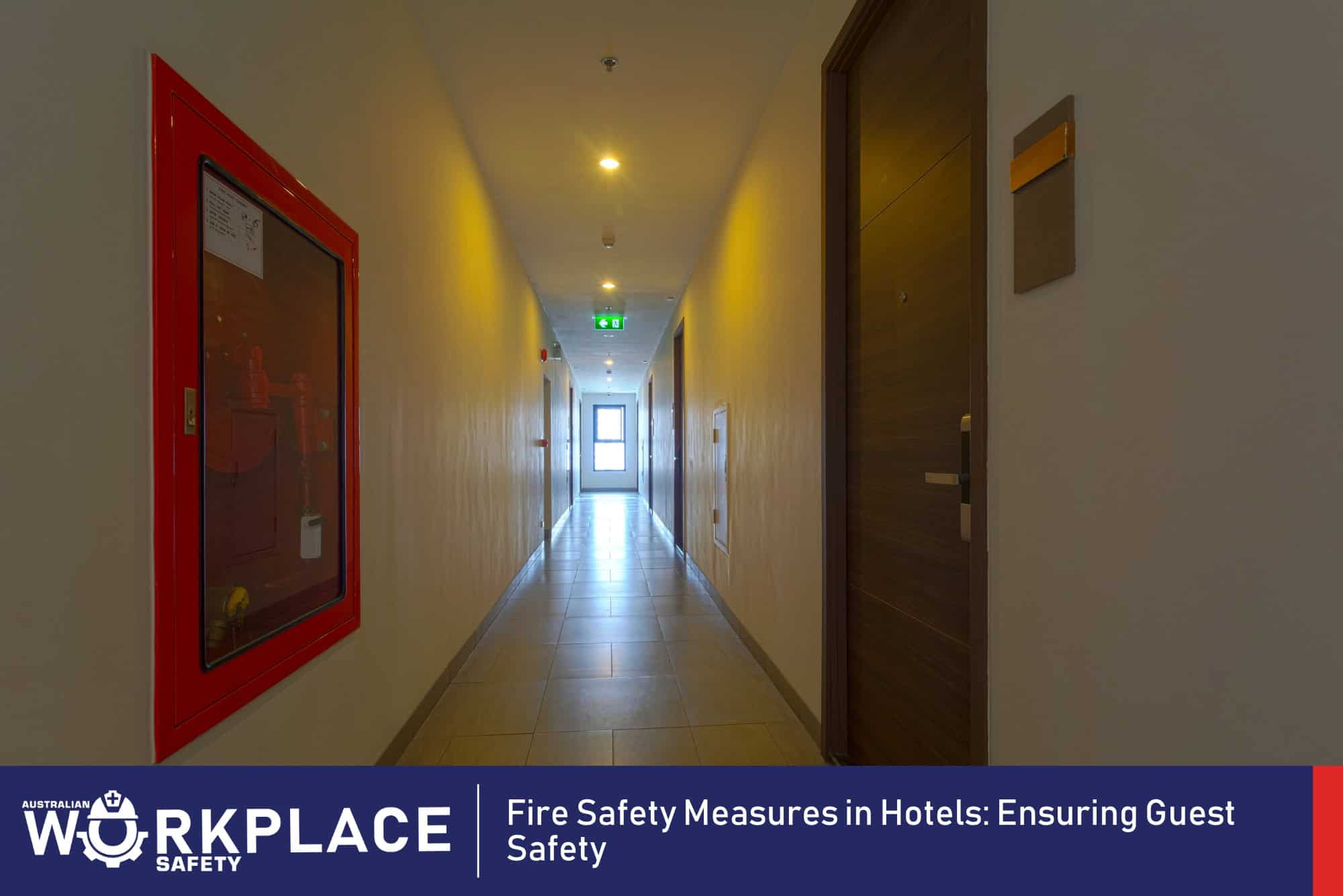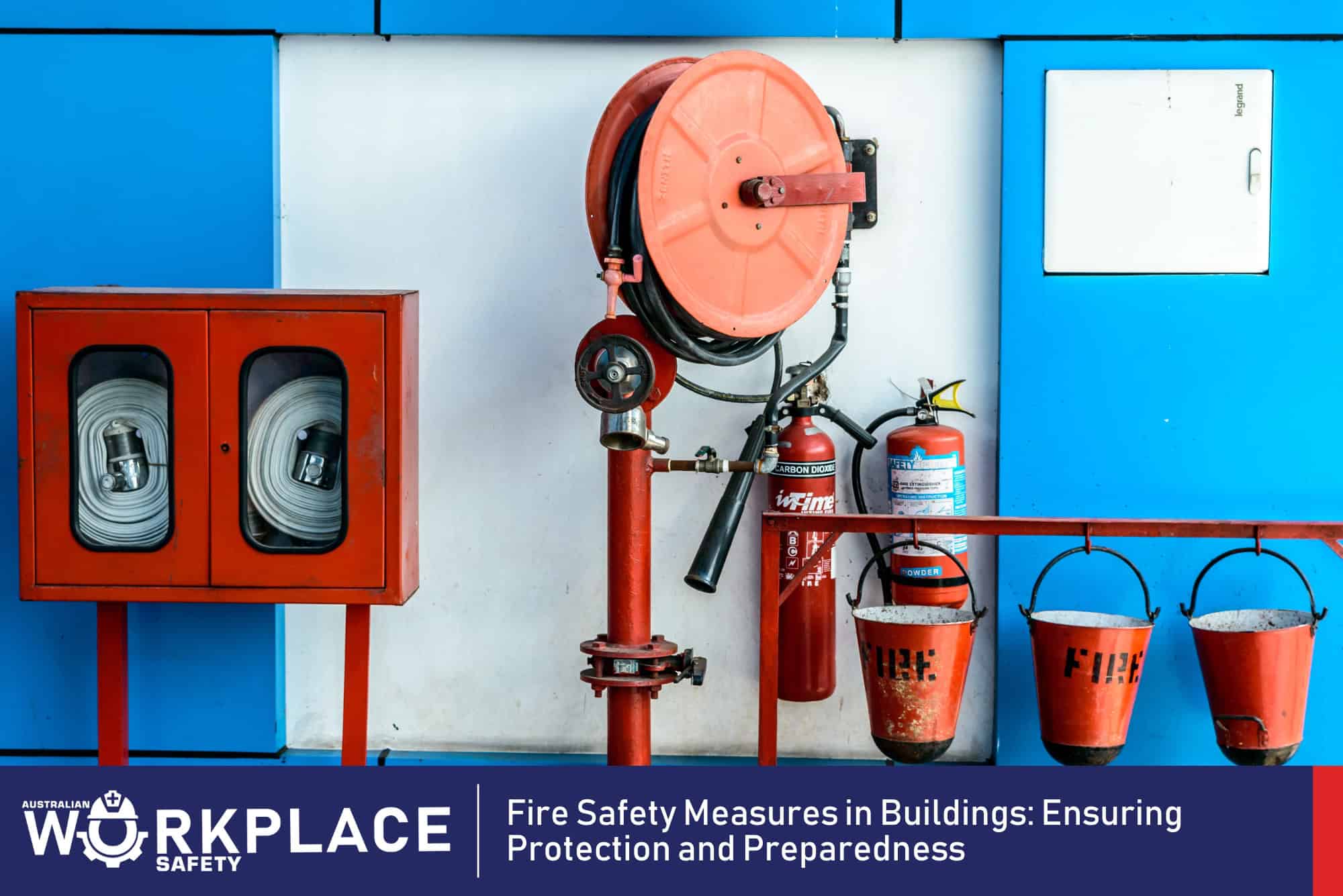Workplace Safety refers to the measures and procedures implemented to ensure employees’ health and well-being while at work. This includes preventing accidents and illnesses that may arise from work-related activities.
Importance of workplace safety
Workplace Safety is not just a legal requirement but also a moral obligation for employers. A safe work environment not only protects employees from harm but also contributes to positive work culture, increased productivity, and reduced absenteeism. Moreover, workplace safety protects the company’s reputation, reduces the risk of lawsuits, and can lead to lower insurance costs.
Overview of workplace safety in Australia
Australia has a strong legal framework for workplace safety, which is governed by the Work Health and Safety Act 2011 (WHS Act) and Work Health and Safety Regulations. The act imposes a duty of care on employers to provide a safe work environment for employees, visitors, and contractors.
Employers are also required to conduct regular risk assessments, implement controls to reduce risks and provide ongoing training and communication on workplace safety.
Purpose of this article
The purpose of this guide is to provide a comprehensive overview of Workplace Safety Policies and Procedures in Australia. This guide covers the legal requirements, risk assessment, incident management, safety procedures, training and communication, and review and improvement. This guide is designed to assist employers in meeting their legal obligations and provide employees with a safe work environment.

Legal Requirements
This section will provide an overview of the legal requirements for workplace safety in Australia, including the Occupational Health and Safety Act 2004 and any relevant regulations and codes of practice. The section will discuss the responsibilities of employers and employees in ensuring workplace safety and the penalties for non-compliance with workplace safety regulations.
Work Health and Safety Act 2011
The Work Health and Safety Act 2011 (WHS Act) is the primary legislation governing workplace safety in Australia. The act sets out the duties and responsibilities of employers, employees, and other duty-holders regarding workplace health and safety. The WHS Act applies to all workplaces, including businesses, government agencies, and not-for-profit organisations.
Work Health and Safety Regulations
The Work Health and Safety Regulations prescribe the specific requirements that must be met to comply with the WHS Act. The regulations cover a wide range of topics, including the management of hazardous substances, the provision of first aid facilities, and the use of personal protective equipment.
Duty of care
Under the WHS Act, employers have a duty of care to provide a safe work environment for employees, visitors, and contractors. This duty of care requires employers to take reasonable steps to identify and control workplace hazards and to provide adequate information, training, and supervision to employees. Employers must also consult with employees and other stakeholders on matters relating to workplace health and safety.
Penalties for non-compliance
Employers must take their workplace safety obligations seriously and ensure they comply with the law at all times. Non-compliance with the WHS Act and Regulations can result in significant penalties for employers. This includes fines, imprisonment, and the possibility of being held personally liable for any harm caused to employees or other persons.
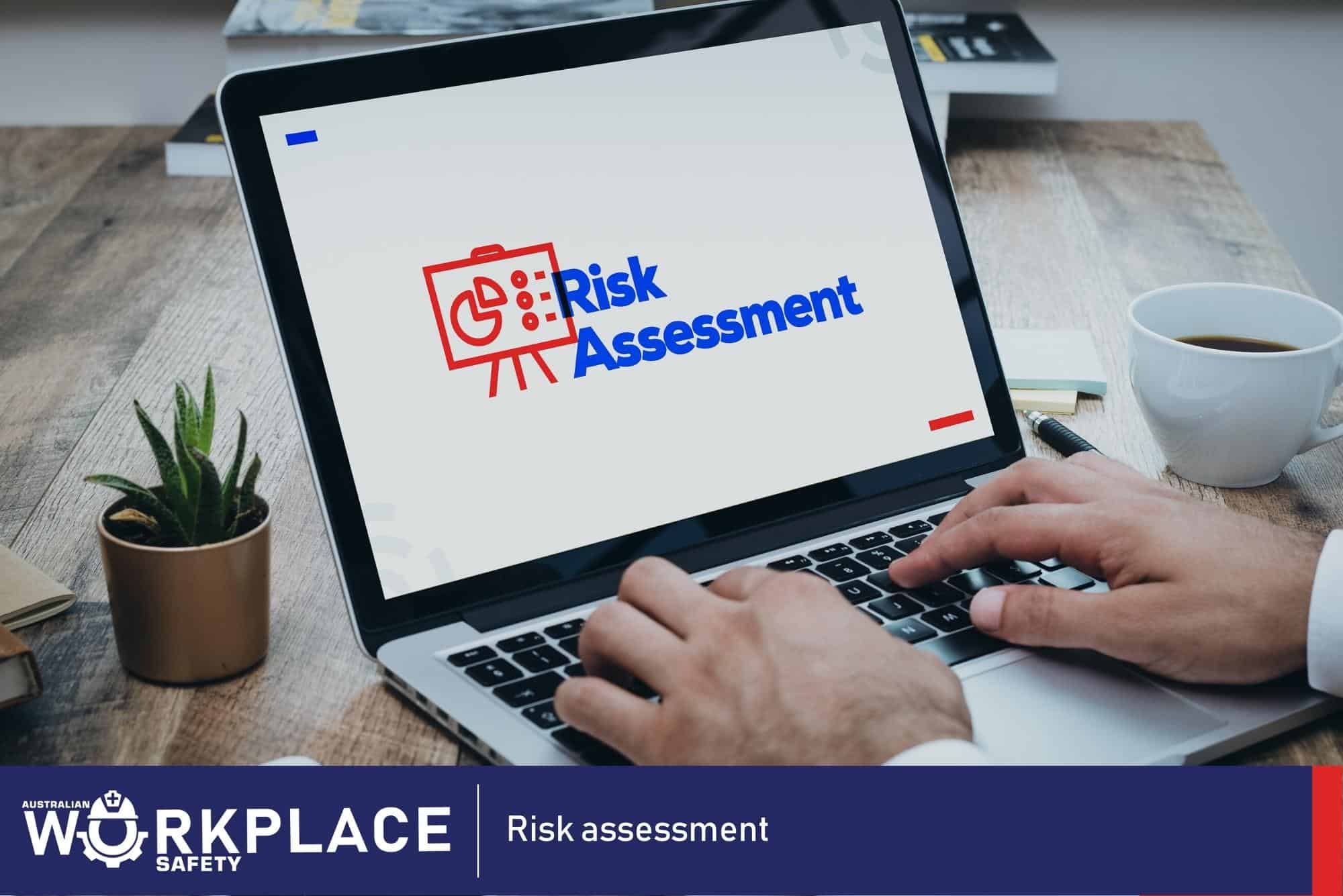
Risk assessment
This section will discuss the importance of conducting regular risk assessments to identify potential hazards in the workplace and how to assess and manage these risks effectively. The section will cover best practices for risk assessment and the role of employees in contributing to a safe and healthy work environment.
Definition of risk assessment
A Risk Assessment is a process of identifying and evaluating the potential risks associated with workplace activities. The purpose of a risk assessment is to identify potential hazards and implement controls to reduce or eliminate these risks.
Steps in the risk assessment process
The Risk Assessment process typically involves the following steps:
- Identify the hazard
- Assess the risk
- Implement controls
- Review and monitor the effectiveness of controls
Identifying hazards
The first step in the risk assessment process is to identify potential hazards. Hazards can arise from various sources, including work activities, equipment, substances, and the work environment. Employers must consider all aspects of the workplace and identify any potential hazards that may pose a risk to employees, visitors, or contractors.
Assessing the risk
Once the hazards have been identified, the next step is to assess the risk associated with each hazard. This involves considering the likelihood of harm occurring and the severity of the harm that may result. The risk assessment must also take into account any existing controls that are in place.
Implementing controls
Once the risks have been assessed, the next step is to implement controls to reduce or eliminate the risks. A range of controls can be implemented, including engineering controls, administrative controls, and personal protective equipment. Employers must choose the most appropriate control for each hazard, taking into account the severity of the risk and the feasibility of implementing the control.
Reviewing and monitoring the effectiveness of controls
The final step in the risk assessment process is to review and monitor the effectiveness of the controls. Employers must regularly review the controls and assess whether they are still effective in reducing the risks. If the controls are no longer effective, new controls must be implemented.
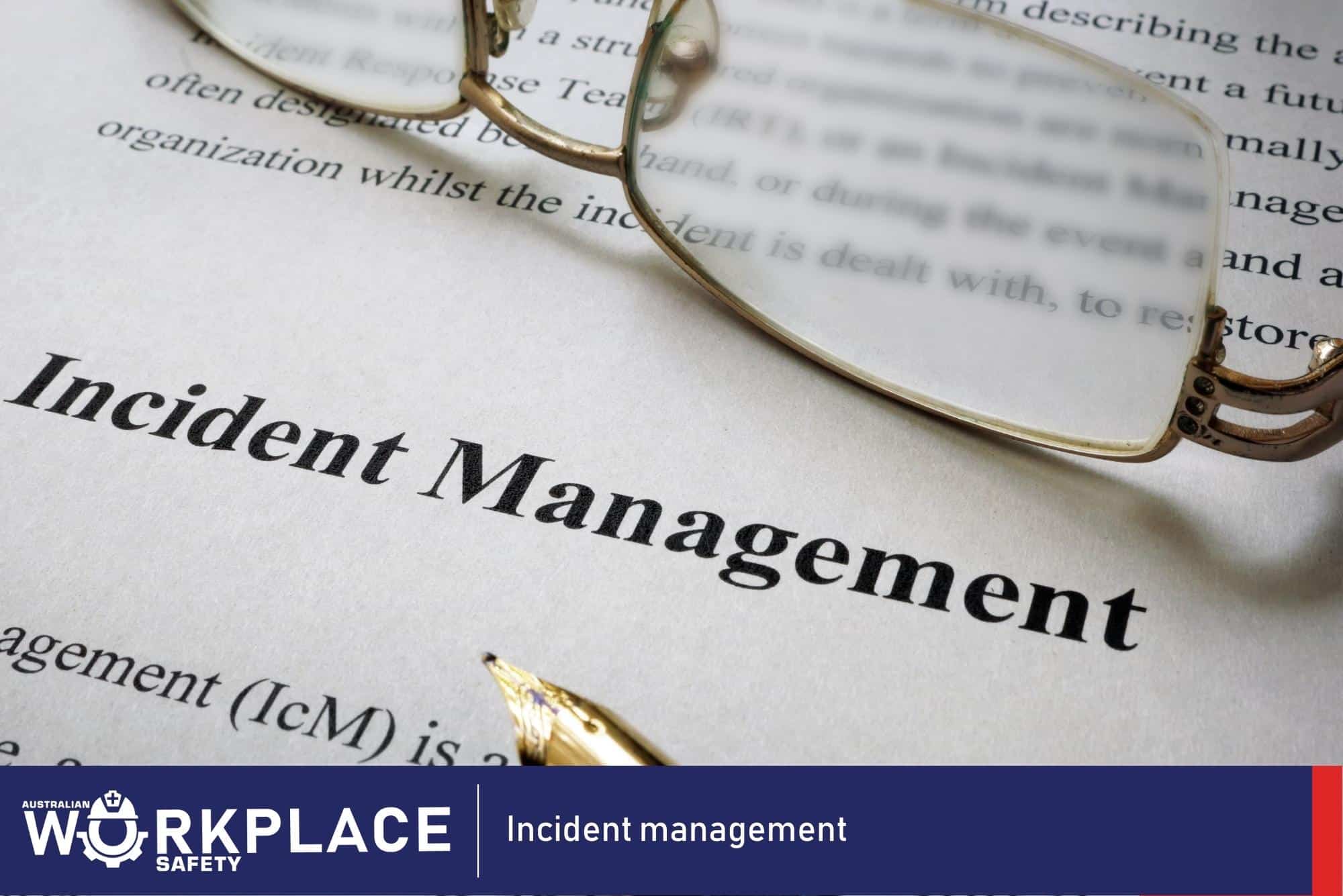
Incident management
This section will outline the procedures for managing incidents and accidents in the workplace, including the role of first responders, reporting requirements, and the investigation process. The section will also discuss the importance of providing appropriate support to employees involved in incidents and the importance of conducting follow-up investigations to prevent similar incidents in the future.
Definition of incident management
Incident Management refers to the process of responding to and managing workplace incidents, such as accidents, injuries, and near-misses. The purpose of incident management is to ensure that incidents are promptly and effectively addressed and that the necessary measures are taken to prevent similar incidents from occurring in the future.
Steps in the incident management process
The Incident Management process typically involves the following steps:
- Reporting the incident
- Assessing the incident
- Providing first aid
- Investigating the incident
- Implementing corrective actions
Reporting the incident
The first step in the Incident Management process is to report the incident. All incidents, including accidents, injuries, and near-misses, must be reported as soon as possible. Employees, visitors, and contractors must know the reporting procedures and who to report incidents to.
Assessing the incident
Once the incident has been reported, the next step is to assess the incident. This involves determining the extent of the harm caused and the resources that will be required to manage the incident. If necessary, emergency services may be called to assist.
Providing first aid
If the incident has caused injury, first aid must be provided as soon as possible. All employers must have a first-aid kit readily available and ensure that employees are trained in first-aid procedures. If the injury is serious, emergency services must be called immediately.
Investigating the incident
The incident must be investigated to determine the root cause and identify any factors that contributed to the incident. The investigation must be thorough and consider all aspects of the incident, including the work activities, equipment, substances, and the work environment.
Implementing corrective actions
Once the incident has been investigated, the next step is implementing corrective actions to prevent similar incidents from occurring in the future. This may involve changing work procedures, replacing equipment, or providing additional training to employees.
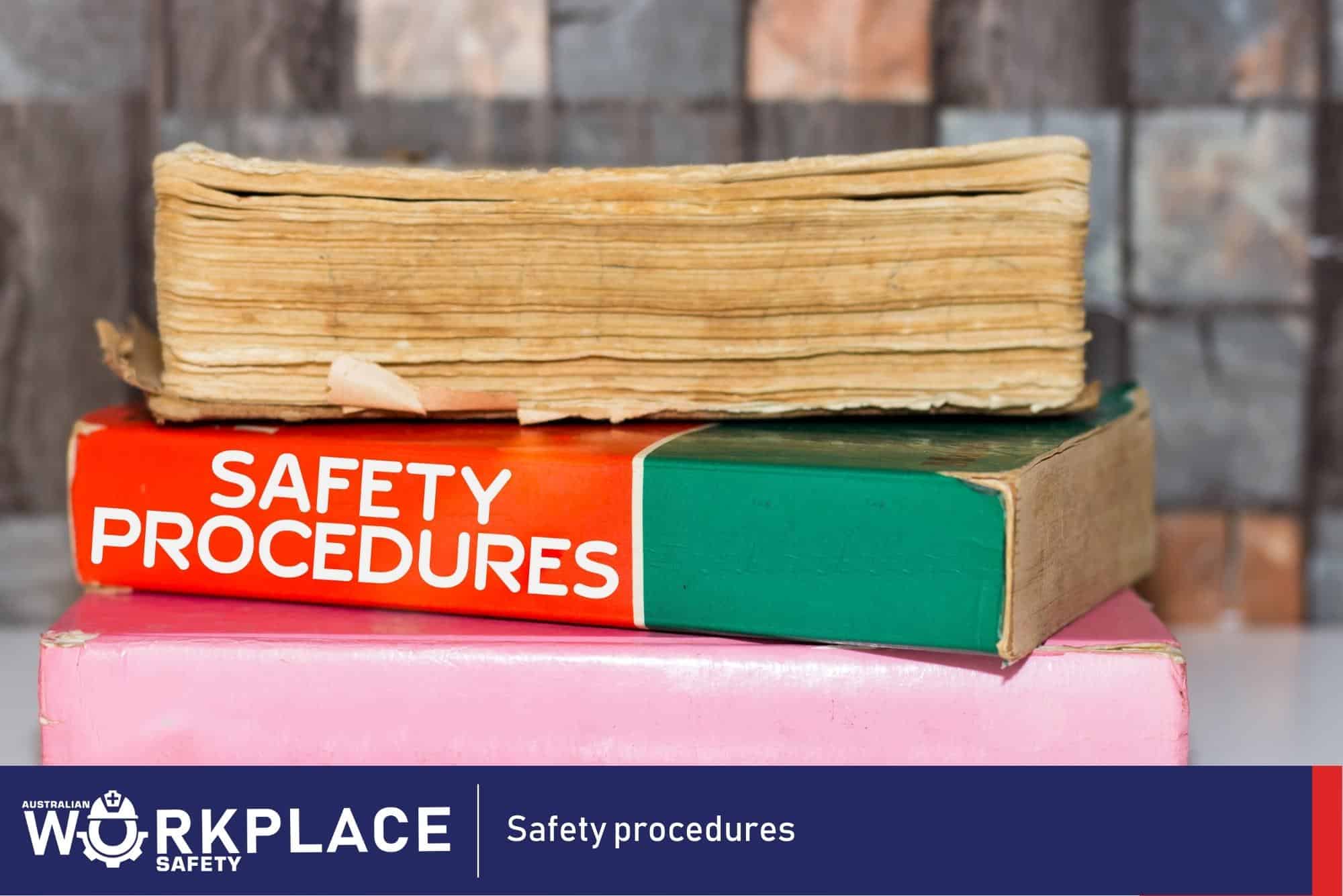
Safety procedures
This section will outline the procedures employees and employers should follow to promote workplace safety, including emergency procedures, personal protective equipment, and safe work practices. The section will also discuss the importance of communicating these procedures to employees and ensuring that they are aware of their role in promoting workplace safety.
Importance of safety procedures
Safety procedures are an essential component of workplace safety policies and procedures in Australia. They provide a clear and detailed guide on how to perform work tasks safely, minimising the risk of injury or harm. Implementing safety procedures helps ensure that all employees are working in a safe and healthy environment, which in turn can increase productivity and reduce costs associated with workplace incidents.
Development of safety procedures
Safety procedures should be developed in consultation with employees and should be based on the risks associated with specific work tasks. They should be clear, concise, and easy to understand and should be reviewed and updated regularly to ensure that they remain relevant and effective.
Implementation of safety procedures
Once safety procedures have been developed, they must be implemented and communicated to all employees, visitors, and contractors. This may involve training, inductions, and providing employees with access to the procedures in an easily accessible format.
Review and update safety procedures
It is important to regularly review and update safety procedures to ensure that they remain relevant and effective. This may involve considering changes in the work environment, new equipment, or changes to work tasks.

Training and communication
This section will outline the importance of providing regular training and communication programs to employees on workplace safety, including general awareness programs, role-specific safety training, and specialised safety training for high-risk work environments. The section will also discuss the role of employees in contributing to a safe and healthy work environment through their participation in training and communication programs.
Importance of training and communication
Effective training and communication are critical to the success of workplace safety policies and procedures in Australia. They help to ensure that all employees understand the importance of working safely and are equipped with the knowledge and skills to do so. Regular training also helps to reinforce safe work practices and can identify areas for improvement.
Employee training
Employee training should be delivered in a manner that is engaging and relevant to the individual’s role and responsibilities. The training should cover all aspects of workplace safety policies and procedures, including the safe use of equipment, emergency procedures, and risk management.
Induction training
Induction training is a critical component of employee training and is particularly important for new employees or those who are new to a specific role or task. Induction training should be delivered as soon as possible after an employee starts work and should include a comprehensive overview of workplace safety policies and procedures.
Communication
Regular communication keeps employees informed and engaged with workplace safety policies and procedures. This may involve regular safety meetings, bulletins, or newsletters. In addition, open and two-way communication between employees and management is important in ensuring that employees feel comfortable reporting safety concerns and incidents.

Review and improvement
This section will discuss the importance of regularly reviewing and updating workplace safety policies and procedures in line with the latest regulations and best practices. The section will also outline the process for reviewing and improving workplace safety, including regular audits and consultation with employees, industry associations, and safety experts.
The section will emphasise the importance of continuous improvement to ensure a safe and healthy work environment for everyone.
Importance of review and improvement
Regular review and improvement of workplace safety policies and procedures are essential to ensure that they remain effective and relevant. This process helps to identify areas for improvement and to make necessary changes to keep employees safe and healthy in the workplace.
Incident review
Incident review is an important component of the review and improvement process. It involves reviewing incidents that have occurred in the workplace to identify the root cause and to determine what changes can be made to prevent similar incidents from happening in the future.
Safety audits
Safety audits are an effective way to identify potential hazards and to evaluate the effectiveness of existing workplace safety policies and procedures. Safety audits should be conducted regularly and should involve a comprehensive review of all aspects of the workplace, including equipment, processes, and work practices.
Employee feedback
Employee feedback is a valuable source of information for the review and improvement process. Encouraging employees to provide feedback on workplace safety policies and procedures can help to identify areas for improvement and to ensure that employees feel involved and engaged in the process.

Conclusion
Workplace safety is a critical aspect of any business or organisation, and it is essential to ensure that employees are protected from harm while they are on the job. Implementing effective workplace safety policies and procedures is key to achieving this goal.
The benefits of effective workplace safety
Effective workplace safety policies and procedures provide a wide range of benefits, including improved employee health and well-being, reduced workplace accidents and injuries, and increased productivity and efficiency. Additionally, a strong commitment to workplace safety can help to build a positive workplace culture and to create a safer and healthier work environment for all employees.
The future of workplace safety
The future of workplace safety is bright, and there is a growing recognition of the importance of creating safe and healthy workplaces. With advances in technology and a continued focus on workplace safety, it is expected that the standards of workplace safety in Australia will continue to improve in the years to come.
Workplace safety is of the utmost importance, and it is essential to ensure that employees are protected from harm while they are on the job. By implementing effective workplace safety policies and procedures, businesses and organisations can create safer and healthier work environments for their employees and reap the many benefits of a strong commitment to workplace safety.
A commitment to workplace safety not only protects your employees but also contributes to the success of your business. Take action now to ensure the safety and well-being of your employees. Implement comprehensive workplace safety policies and procedures and stay up-to-date with the latest industry standards. Contact us today at Verge Safety Barriers for expert advice and support on creating a safer work environment.

Frequently asked questions
Who is responsible for workplace safety in Australia?
Employers are responsible for ensuring the safety and well-being of their employees in the workplace, by the Occupational Health and Safety Act 2004. This includes conducting risk assessments, implementing appropriate safety procedures, and providing training and communication to employees on workplace safety.
What are the penalties for non-compliance with workplace safety regulations in Australia?
Penalties for non-compliance with workplace safety regulations in Australia can be substantial, including fines, legal action, and reputational damage to the business. In serious cases, individuals and companies can face criminal charges and imprisonment.
What are the benefits of implementing comprehensive workplace safety policies and procedures?
The benefits of implementing comprehensive workplace safety policies and procedures include a safer and healthier workplace environment, reduced risk of workplace accidents and incidents, improved employee morale and engagement, and reduced costs associated with workplace accidents and incidents.
What resources are available to help me create effective workplace safety policies and procedures?
Many resources are available to help you create effective workplace safety policies and procedures, including government agencies, industry associations, and professional health and safety consultants. These resources can provide expert advice and guidance on creating a safe and healthy work environment for your employees.
Are there any training programs available for employees on workplace safety?
Yes, there are training programs available for employees on workplace safety, including general awareness programs, role-specific safety training, and specialised safety training for high-risk work environments. These training programs can help employees understand the importance of workplace safety, how to identify and mitigate potential hazards, and what to do in the event of an emergency.
How can I ensure that my workplace safety policies and procedures are up-to-date and in line with the latest regulations?
To ensure that your workplace safety policies and procedures are up-to-date and in line with the latest regulations, it is important to regularly review and update them in consultation with your employees, industry associations, and safety experts. This will help you stay ahead of new and emerging safety concerns and ensure that your workplace remains safe and healthy for everyone.
